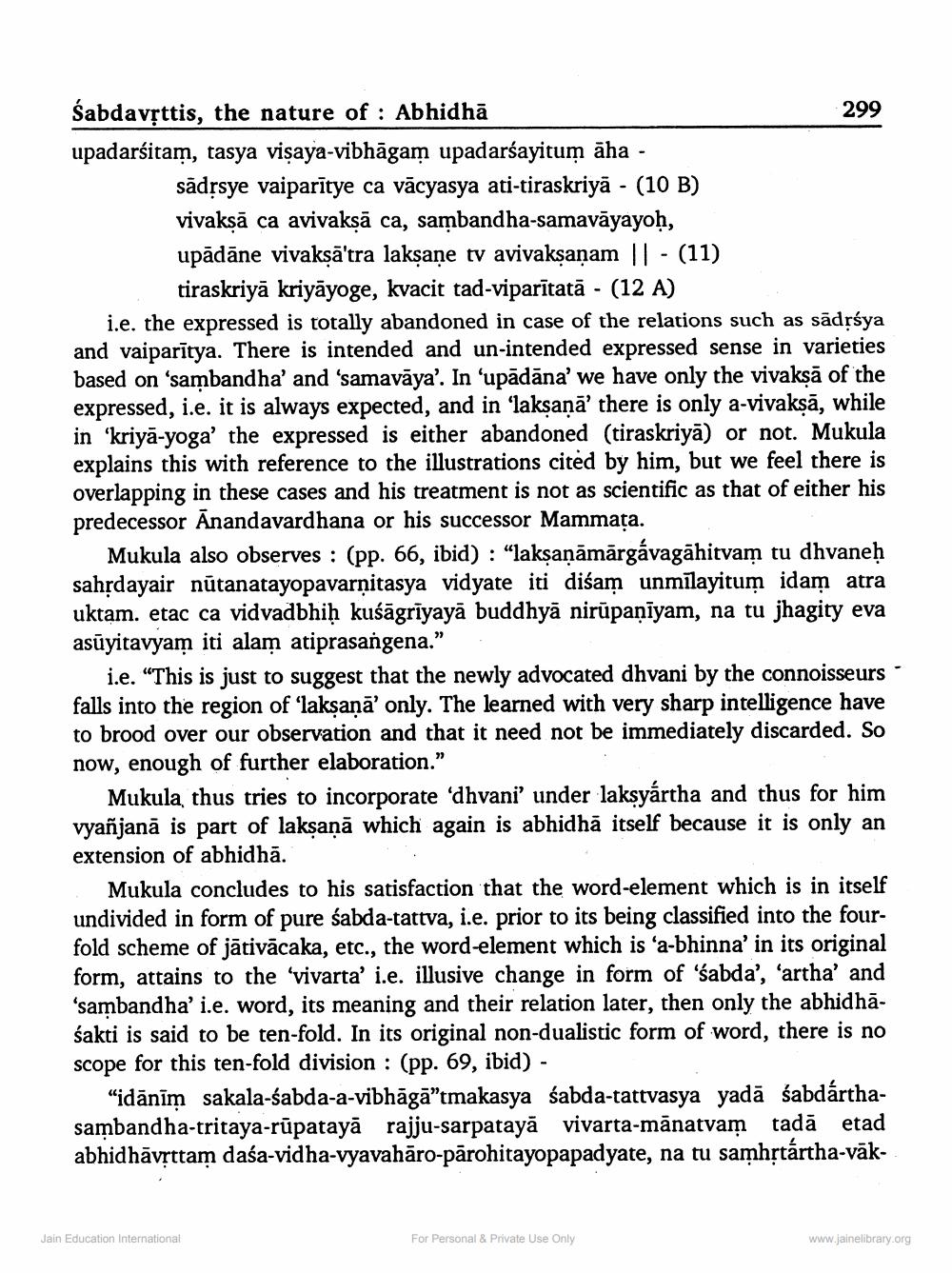________________
Śabdavịttis, the nature of : Abhidhā
299 upadarśitam, tasya visaya-vibhāgam upadarśayitum āha -
sādssye vaiparītye ca vācyasya ati-tiraskriyā - (10 B) vivaksā ca avivaksā ca, sambandha-samavāyayoh, upādāne vivaksā'tra lakṣaṇe tv avivaksanam || - (11)
tiraskriyā kriyāyoge, kvacit tad-viparītatā - (12 A) i.e. the expressed is totally abandoned in case of the relations such as sādrśya and vaiparītya. There is intended and un-intended expressed sense in varieties based on 'sambandha' and 'samavāya'. In 'upādāna' we have only the vivaksā of the expressed, i.e. it is always expected, and in 'laksanā' there is only a-vivaksā, while in 'kriya-yoga' the expressed is either abandoned (tiraskriya) or not. Mukula explains this with reference to the illustrations cited by him, but we feel there is overlapping in these cases and his treatment is not as scientific as that of either his predecessor Anandavardhana or his successor Mammaţa.
Mukula also observes : (pp. 66, ibid) : “laksaņāmārgávagāhitvam tu dhvaneh sahrdayair nútanatayopavarņitasya vidyate iti diśam unmīlayitum idam atra uktam. etac ca vidvadbhiḥ kuśāgrīyayā buddhyā nirūpanīyam, na tu jhagity eva asūyitavyam iti alam atiprasangena."
i.e. “This is just to suggest that the newly advocated dhvani by the connoisseurs falls into the region of 'lakṣaṇā' only. The learned with very sharp intelligence have to brood over our observation and that it need not be immediately discarded. So now, enough of further elaboration.”
Mukula, thus tries to incorporate 'dhvani' under laksyártha and thus for him vyañjanā is part of laksaņā which again is abhidhā itself because it is only an extension of abhidhā.
Mukula concludes to his satisfaction that the word-element which is in itself undivided in form of pure sabda-tattva, i.e. prior to its being classified into the fourfold scheme of jātivācaka, etc., the word-element which is 'a-bhinna' in its original form, attains to the 'vivarta' i.e. illusive change in form of 'sabda', 'artha' and 'sambandha' i.e. word, its meaning and their relation later, then only the abhidhāsakti is said to be ten-fold. In its original non-dualistic form of word, there is no scope for this ten-fold division : (pp. 69, ibid) -
“idānīm sakala-śabda-a-vibhāgā”tmakasya śabda-tattvasya yadā šabdárthasambandha-tritaya-rūpatayā rajju-sarpatayā vivarta-mānatvam tadā etad abhidhāvșttam daśa-vidha-vyavahāro-pārohitayopapadyate, na tu samhịtártha-vāk
Jain Education International
For Personal & Private Use Only
www.jainelibrary.org




